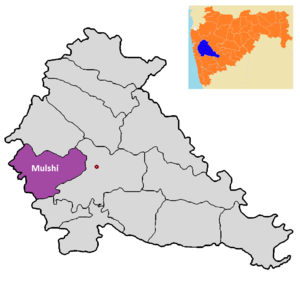Ambemohar facts for kids
Ambemohar is a special kind of rice that smells really nice, like mango blossoms! It grows in the hilly areas of the Western Ghats in the state of Maharashtra in India.
Contents
What is Ambemohar Rice?
Ambemohar rice is famous for its strong, sweet smell, which reminds people of mango flowers. That's actually where its name comes from! In the Marathi language, which is spoken in Maharashtra, "Ambemohar" means "mango blossom." This special rice has been grown in this region for a very long time. About a hundred years ago, a huge amount of it – around 54,000 tons – was grown just in the Mulshi area of the Pune district.
Where and How It Grows
This unique rice grows in the foothills of the Western Ghats mountains in Maharashtra, India. It doesn't produce as much rice per acre as some other types, yielding about 1.9 tons per hectare.
The grains of Ambemohar rice are quite short, about 5.5 millimeters long, and wide, around 2.2 millimeters. This is different from longer grains like Basmati rice. Even though the grains look different, both Ambemohar and Basmati have a similar strong, pleasant smell. This is why Ambemohar is considered an "Aromatic rice" variety. When cooked, the short grains of Ambemohar rice tend to break easily and stick together, making them soft and comforting.
New Kinds of Rice from Ambemohar
Ambemohar rice is a bit tricky to grow because it can easily get sick with plant diseases. This means farmers don't get as much rice from it compared to other types. To help with this, scientists created a new kind of rice called Indrayani in 1987. Indrayani is a mix that includes Ambemohar, and it was developed at the Rice Research Centre near Lonavala. Indrayani has also been used to create even newer rice varieties, like Phule Maval and Phule Samrudhi.
How People Use Ambemohar Rice
Ambemohar rice is used in many ways, especially in traditional foods.
- It's often used to make a thick soup of rice and milk called ‘Bhatachi Pej’. This is a comforting dish, especially good for children, older people, and those who are not feeling well.
- People also use this rice in important religious events and wedding ceremonies.
- In the Mulshi area of the Pune district, Ambemohar rice is used to make ‘Vapholya’. This is a traditional food eaten during the Makar Sankranti festival.
- It's great for making soft Idli and crispy dosa, which are popular South Indian dishes.
- You can also make puffed rice, called Kurmure in Marathi, from Ambemohar.
- Even the outer layer of the rice grain, called bran, is useful! It can be used to extract oil or for growing mushrooms.
Special Recognition for Ambemohar
The Mulshi Taluka area, which is a sub-division of the Pune district in the foothills of the Sahyadri mountains, has received a special recognition for Ambemohar rice. This is called a Geographical Indication (GI). A GI tag means that a product comes from a specific place and has qualities or a reputation due to that origin. It helps protect the unique identity of Ambemohar rice from that region.
Rice That Looks Like Ambemohar
It's becoming quite rare to find farmers who regularly grow real Ambemohar rice. This is because it costs a lot to produce. So, when it's sold in stores, it has to be expensive. Sadly, some shopkeepers in Maharashtra sell other types of rice that look similar but aren't the real Ambemohar. They do this to make more money. This practice has made it even harder for farmers who want to grow the authentic Ambemohar, as they can earn more by growing these "lookalike" varieties themselves. Two common lookalikes are Jeera Sambhar rice from Andhra Pradesh and Jawaful from Madhya Pradesh.


